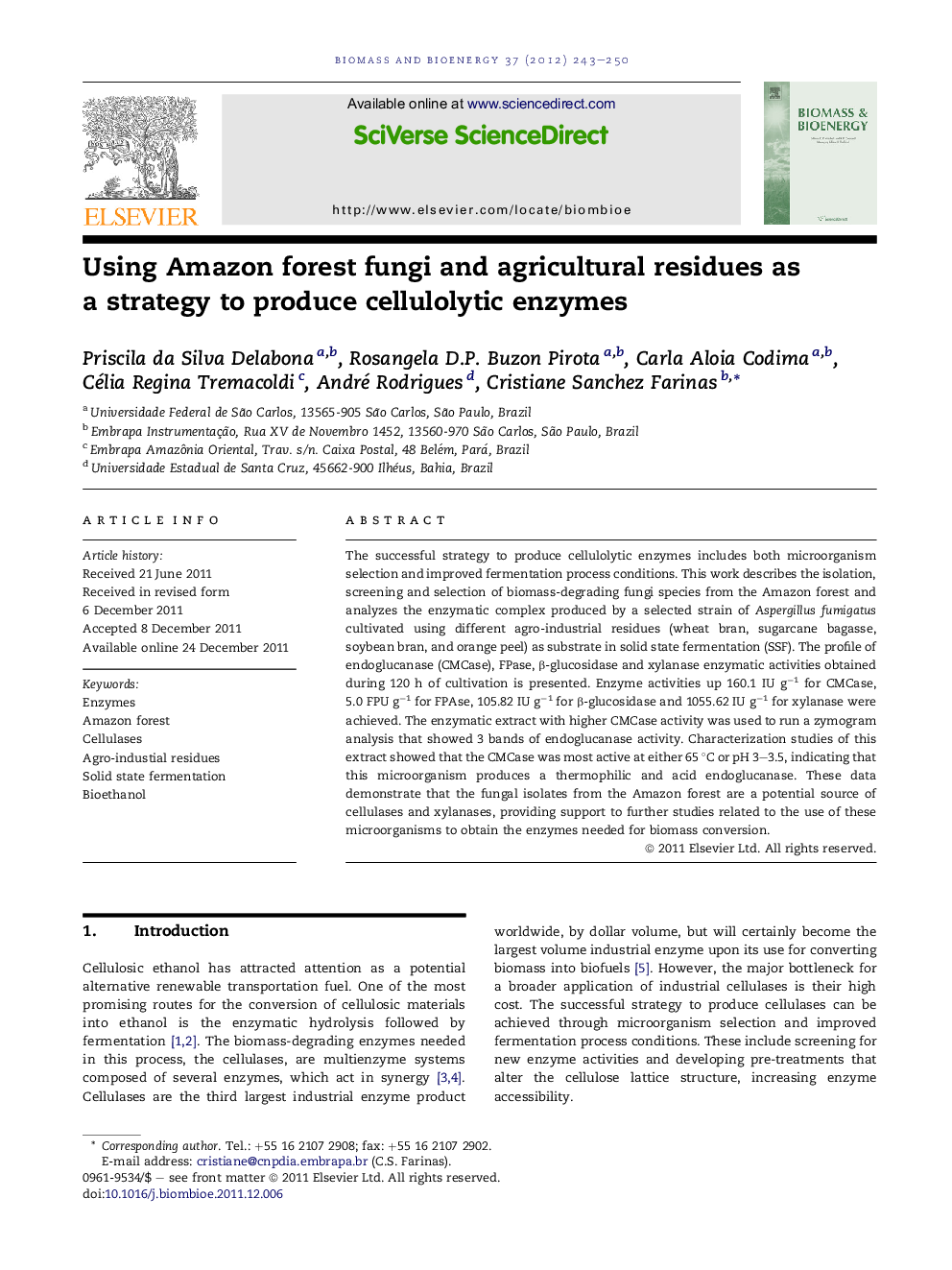| کد مقاله | کد نشریه | سال انتشار | مقاله انگلیسی | نسخه تمام متن |
|---|---|---|---|---|
| 677616 | 1459856 | 2012 | 8 صفحه PDF | دانلود رایگان |

The successful strategy to produce cellulolytic enzymes includes both microorganism selection and improved fermentation process conditions. This work describes the isolation, screening and selection of biomass-degrading fungi species from the Amazon forest and analyzes the enzymatic complex produced by a selected strain of Aspergillus fumigatus cultivated using different agro-industrial residues (wheat bran, sugarcane bagasse, soybean bran, and orange peel) as substrate in solid state fermentation (SSF). The profile of endoglucanase (CMCase), FPase, β-glucosidase and xylanase enzymatic activities obtained during 120 h of cultivation is presented. Enzyme activities up 160.1 IU g−1 for CMCase, 5.0 FPU g−1 for FPAse, 105.82 IU g−1 for β-glucosidase and 1055.62 IU g−1 for xylanase were achieved. The enzymatic extract with higher CMCase activity was used to run a zymogram analysis that showed 3 bands of endoglucanase activity. Characterization studies of this extract showed that the CMCase was most active at either 65 °C or pH 3–3.5, indicating that this microorganism produces a thermophilic and acid endoglucanase. These data demonstrate that the fungal isolates from the Amazon forest are a potential source of cellulases and xylanases, providing support to further studies related to the use of these microorganisms to obtain the enzymes needed for biomass conversion.
► Cellulase production is a critical step in the economics of second generation ethanol.
► Screening of microorganism can contribute to finding new cellulolytic enzymes.
► Amazon forest fungi were able to efficiently produce cellulases and xylanases.
Journal: Biomass and Bioenergy - Volume 37, February 2012, Pages 243–250